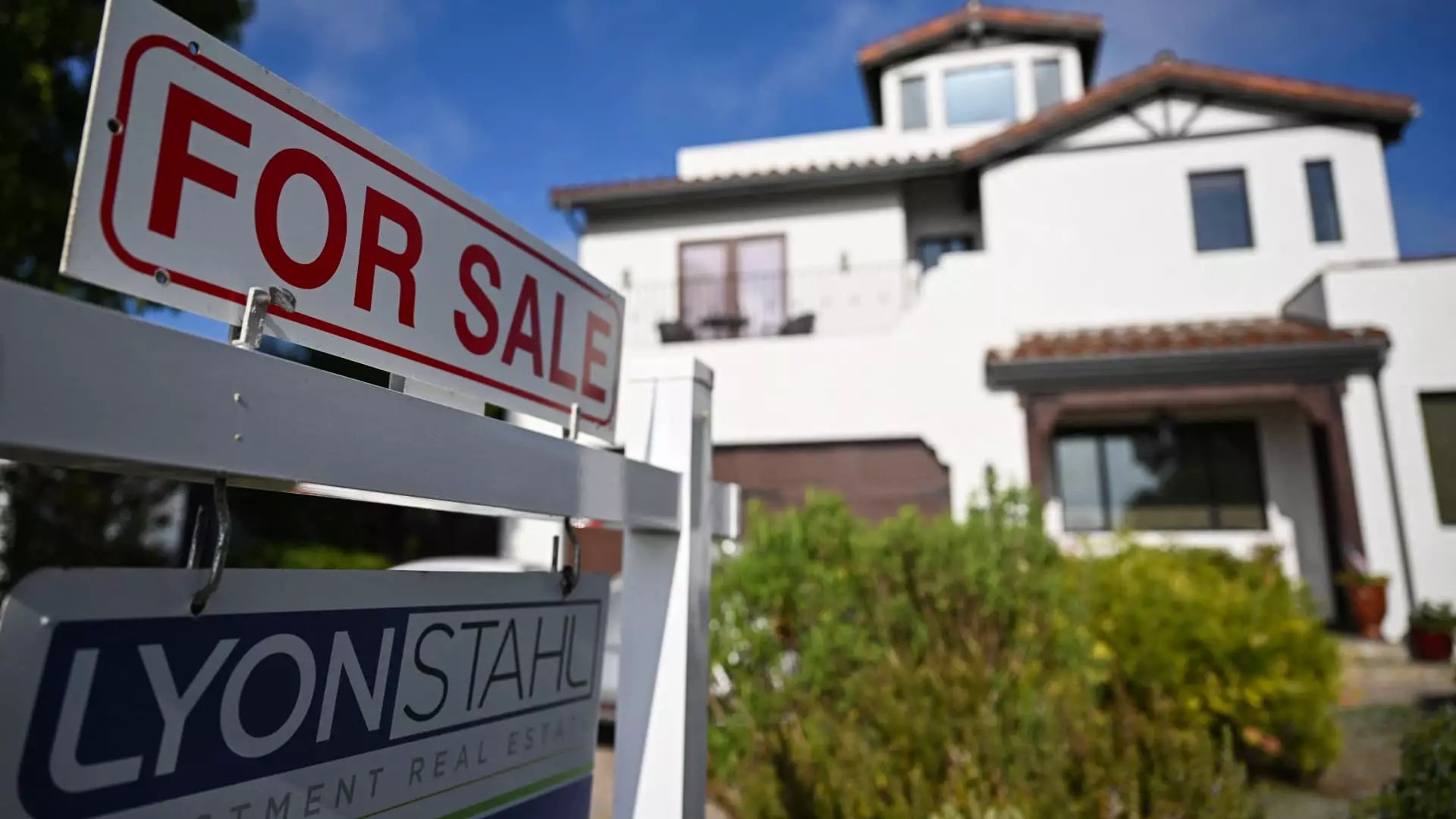The recent drop in mortgage rates is a surprising twist in an increasingly volatile economic landscape. Last Thursday, the average rate on the 30-year fixed loan fell by a striking 12 basis points to 6.63%, marking the lowest point since October. This decline was triggered in part by the latest tariff announcements from the Trump administration, which sent financial markets into a frenzy. The ensuing sell-off in the stock market pushed investors toward bonds, causing yields to drop and, subsequently, mortgage rates to follow suit. However, while this may seem like a silver lining, the broader implications for the housing market paint a grim picture for the vast majority of Americans.
Market Panic and Reaction
Matthew Graham, the chief operating officer at Mortgage News Daily, articulated a keen observation regarding the markets’ response: “While plenty of uncertainty remains over the finer points of Wednesday afternoon’s tariff announcement, markets have heard enough to brace for impact on global trade.” The uncertainty stemming from these political decisions exacerbates an already delicate housing situation. Although mortgage rates have dipped, the reality of soaring home prices continues to loom large. In the four weeks leading up to March 30, the average monthly payment for U.S. home buyers reached historic highs, hitting a record $2,802.
This harrowing figure serves as a wake-up call to potential buyers in a volatile housing market. It highlights a fundamental disconnect between declining rates and the skyrocketing costs associated with purchasing a home. The increase in sale prices, now 3.4% higher year-on-year, only intensifies the hardships faced by everyday Americans. While rates may be at their lowest in months, they still represent more than double the lows experienced during the pandemic. The intersection of declining rates and soaring prices creates an illusion of affordability, which could trap unsuspecting buyers.
A Hidden Crisis of Affordability
The most staggering data to emerge from this tumultuous environment is that approximately 70% of U.S. households—around 94 million people—cannot afford a $400,000 home. With the estimated median price of new homes projected to reach around $460,000 by 2025, the mortgage affordability crisis is sharpening its teeth. The National Association of Home Builders’ statistics reveal that unless a household’s income exceeds a certain threshold—around $61,487—they will struggle to secure even a modest property in this landscape.
In fact, it is forecasted that by 2025 nearly 52.87 million households will earn below this threshold, effectively relegating them to a market where a $200,000 home is their only option. Yet, even this low-end market is increasingly elusive due to chronic underbuilding—an issue that has persisted since the Great Recession. The mismatch between demand and supply has thus become a defining characteristic of this market, leading to a housing landscape that is both dysfunctional and skewed.
The Spring Market: More Choices, But Not for Everyone
As spring approaches and the housing market typically blooms, the statistics tell a different story. While March did see a 10% annual increase in new listings and a remarkable 28% surge in active listings from the previous year, the broader market dynamics indicate a troubling trend. Homes are lingering on the market longer, and the rate of price reductions is rising. The pending sales—signed contracts for existing homes—have dropped by 5.2% when compared to 2022.
Particularly concerning is the performance in markets previously viewed as hot: Jacksonville and Miami, for example, experienced declines of 15.1% and 13.7%. These shifts can likely be attributed to an adjustment from the pandemic-era bubble. As remote work policies evolve and economic uncertainties loom, many sellers are grasping for a quick exit, often contributing to the additional turbulence in the market. While heightened inventory levels might provide more options, they do not necessarily translate into increased affordability, particularly for first-time buyers who are feeling the brunt of economic strain.
A Call for Real Solutions
The current state of the housing market leaves much to be desired. For those of us holding a center-right perspective, it’s clear that the root of the problem extends beyond simple economic fluctuations. A comprehensive reevaluation of housing policy, regulatory practices, and lending strategies is essential for creating a sustainable market that serves all Americans. As we confront this alarming matrix of high prices, stagnant wages, and insufficient availability, it becomes imperative to advocate for solutions that transcend the superficial metrics of mortgage rates.
This is no time for complacency or wishful thinking. Addressing the realities of our housing crisis requires cogent policy and focused action from both policymakers and industry leaders. Otherwise, we risk normalizing a society where the American Dream becomes financially unattainable for a significant majority.


Leave a Reply